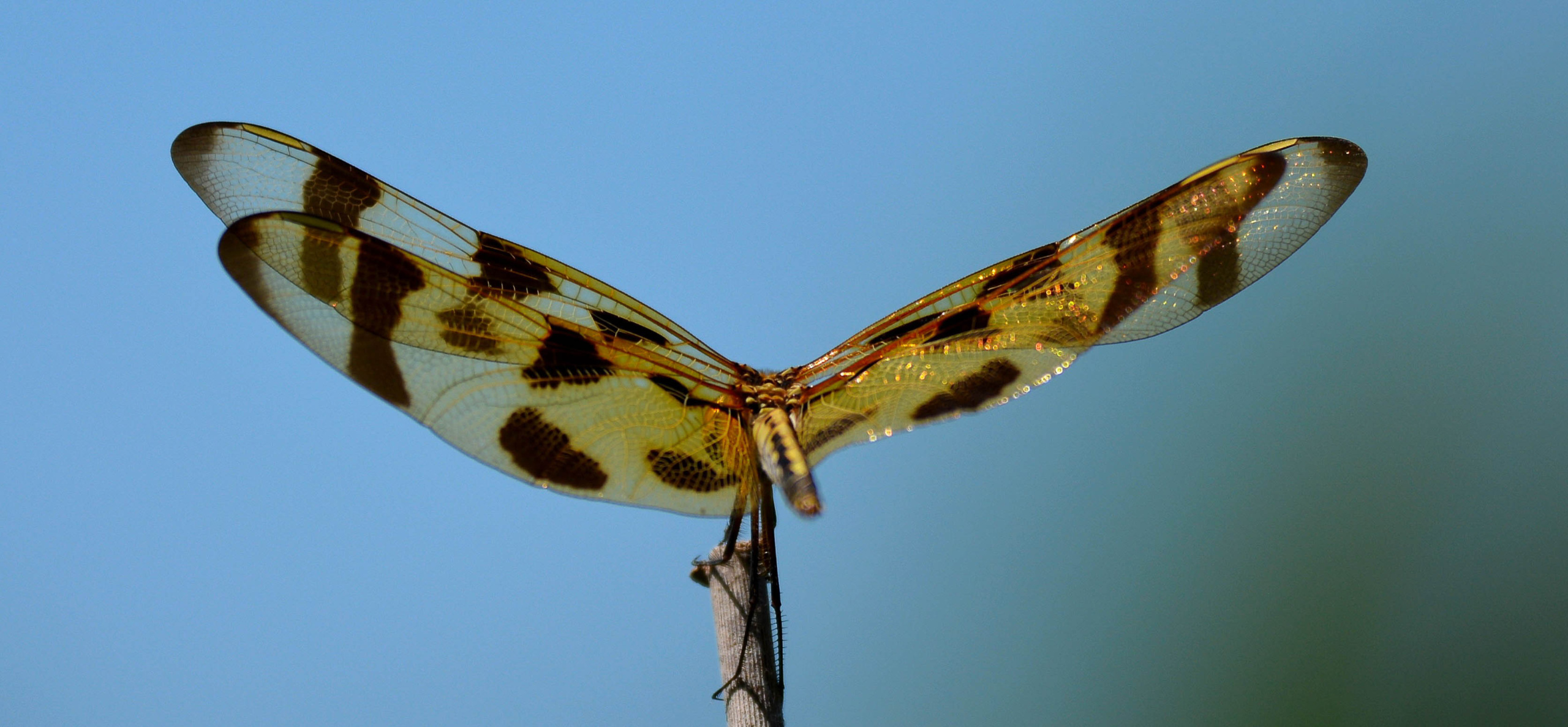
The beauty of the single drops that hit
The pond and cause a wave of life to form
And make each lily shiver just a bit
Is lost inside the power of a storm.
The light that sparkles through two pair of wings
And shimmers green and blue on backs and heads
Becomes a blur to us, the lesser beings,
When dragons dance above their marriage beds.
From far away he flew to his great throne,
A bloom of purple, red, and gold and white.
He does not rule his kingdom all alone.
The dragons dance as one when they take flight.
A sudden shout, a cough, a finger snap
All merge and we become the thunderclap.
— Bill Gadbow, on a July afternoon
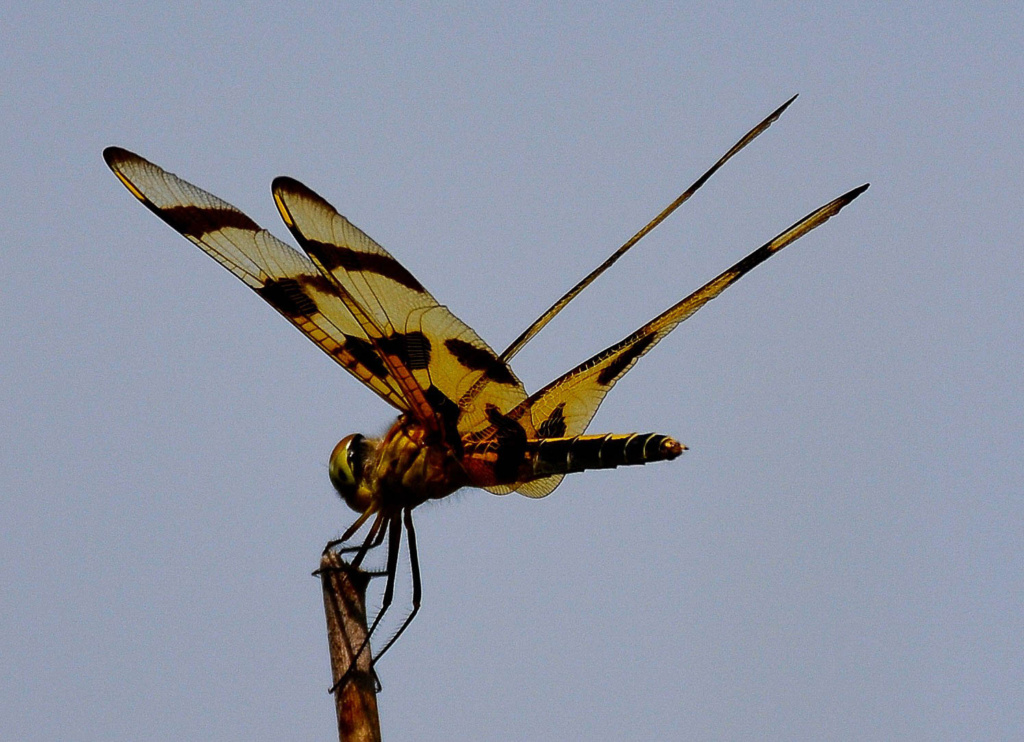
What!?! They drain the ponds!
I wrote the poem after an idyllic day photographing waterlilies, dragonflies, and damselflies at Longwood Gardens. We’ll post some of those waterlily photos in the flora section of a follow-on issue of Birds Eat Free. I was fantasizing about the noble insect ruling his domain, which is valid. Then I read up about how most of the dragonfly life cycle is spent as a nymph and remembered that in the fall, Longwood drains the waterlily ponds to protect the plumbing and tiling from the winter. The nymph stage can last from several months to five years, whereas most adult dragonflies live five weeks or less. So, all that sparkling and dancing that I was waxing poetic about is rendered moot when the humans drain the ponds and kill all the nymphs. I guess. Probably I’m being too anthropomorphic. Is the installation less beautiful because it’s artificial? I’m not sure.
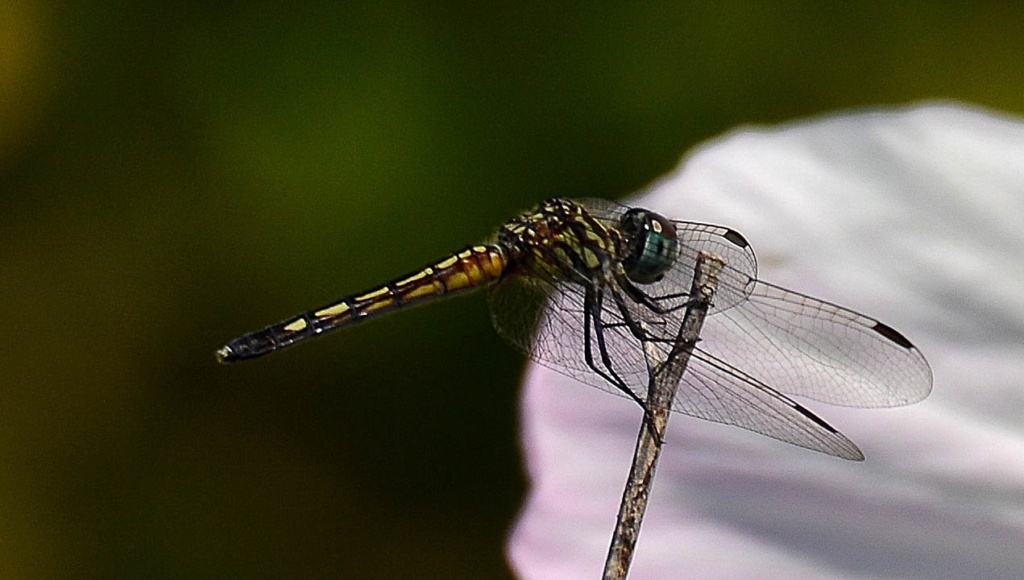
They Fly Really Fast
I have spent many happy days birding at Cape May in New Jersey, especially in the spring and fall when lots of interesting birds are migrating through this peninsula. However, sometimes in the summer on a hot afternoon, it can get kind of slow for birding. On several of those days, I concentrated on dragonflies. For a long time, I couldn’t focus fast enough to get any pictures of these quick flying insects. Among the earliest of organisms to fly, they can reach top speeds of 34 mph and cruise at 10 mph. Some species can cross oceans. With their four wings, they can hover like a helicopter and fly straight down or straight up. And they are constantly moving. Eventually I stopped clicking out-of-focus pictures and just watched them for a long time. I noticed that each insect would land on a leaf or a branch or some other perch for an instant, sometimes for as long as several seconds. Then he would launch out for an aggressive flight around the pond for a minute or more. But always he would return to the exact same spot where he had previously perched. I don’t mean sort of the same spot. It was the exact same spot. So, the strategy to get a good picture was to focus on the spot where the dragonfly had been and wait for him to come back. Stay still. When the insect came into the lens frame, immediately press the shutter. It worked!
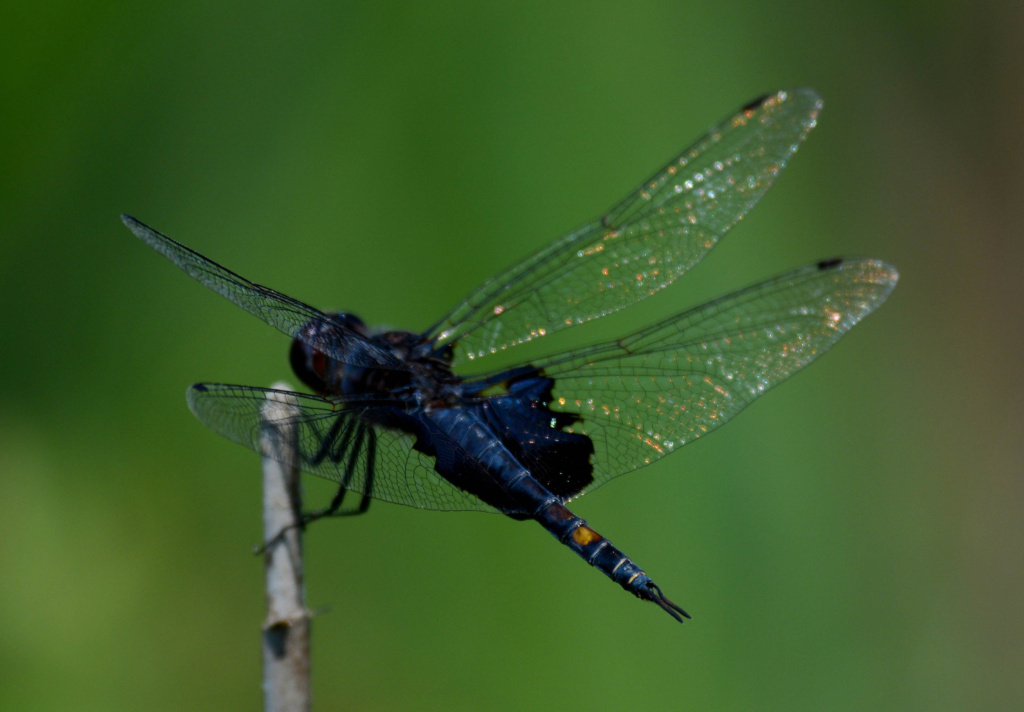
The Biological Sweet Spot
I learned about the biological sweet spot when my son, Mike, was in high school. Back then, Mike was heavily into breeding tropical fish. He was puzzled why inbreeding was not a problem for fish breeders, so he sent out a question on the internet. A college professor responded with the answer that fish are an ancient type of organism, extending back for 530 million years, and that many species of fish have been around relatively unchanged for millions of years. When a population has been around for a long time, all the worst traits get bred out of the population. Those branches of a species with traits that hamper their survival eventually die out. Another way to say it is that the species has reached a biological sweet spot. When a species hits its sweet spot, it is so perfectly adapted to its environment that it doesn’t change for millions of years. Think fish, turtles, sharks, and cockroaches.
Humans have been around for such a short period of time that we aren’t even close to our biological sweet spot and still have lots of bad traits coursing through our gene pools. Inbreeding can cause two healthy humans with recessive genes for a disease to produce diseased offspring. Hemophilia, infertility, and cleft palate are a few well known issues related to inbreeding in humans. Fish don’t have these problems.
And neither do dragonflies. For the last 300 plus million years, dragonfly design hasn’t changed, except for size. They are such efficient fliers that they achieve a 95 percent kill rate. A single dragonfly will eat from thirty to hundreds of mosquitoes per day. Their eyesight is amazing. They can see faster than a human (meaning processing more images per second) and can see almost 360 degrees at one time. One of the many amazing things that they do is that they can fly towards a rival or a prey insect, while appearing to be stationary. They do this by flying in a perfectly direct line towards the other insect. The only clue that they are moving is that they are gradually appearing to get bigger.
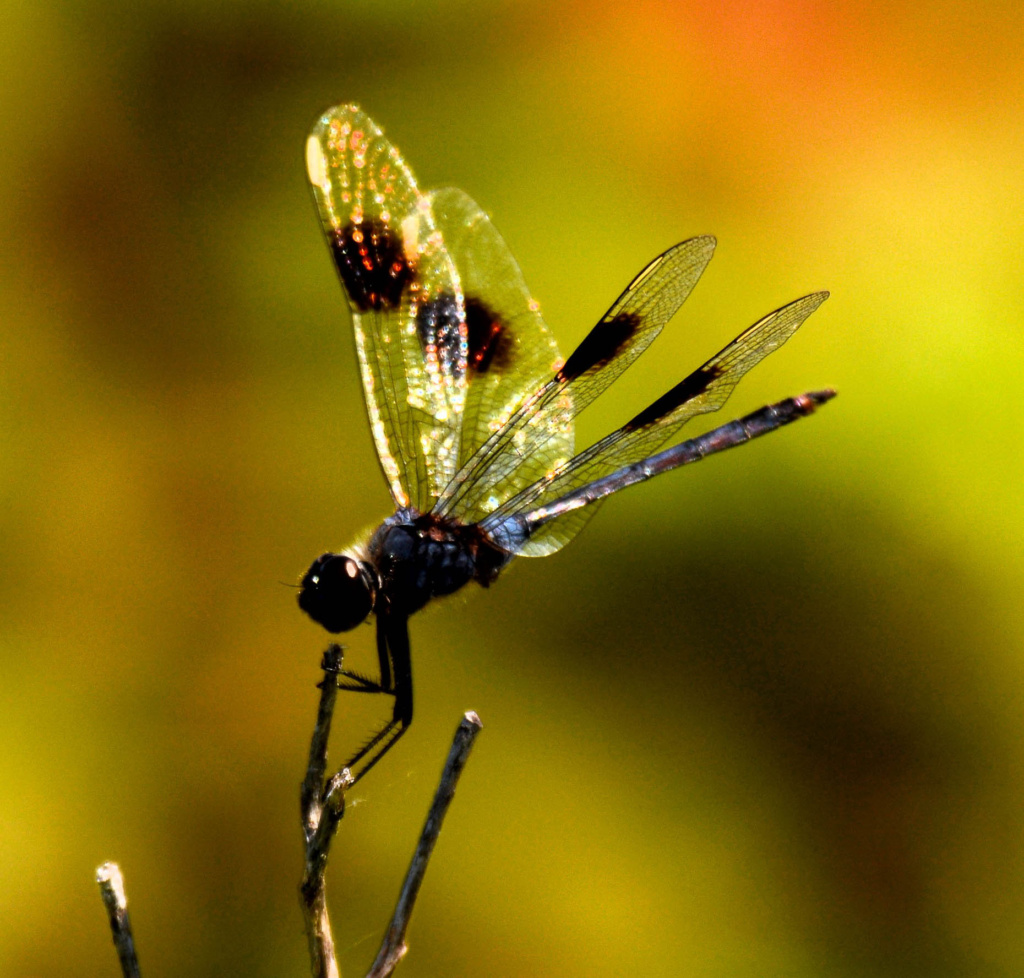
Superior and other senses
On one trip to Cape May, I noticed that the really big dragonflies seem to be repeating the hunting pattern that I had previously noticed – with one exception. Instead of returning to some rock or twig to restart each flight, they appeared to be returning to the same spot in space. Several times, I saw the same large dragonfly stop five feet above the path ahead of me. I wondered if he was returning to the exact same spot, like the dragonflies landing on rocks and twigs. If he was, I should be able to use the same technique to get his picture that I had used on the smaller dragonflies. So, I tried focusing on the spot where he had last stopped in the air in front of me. That was hard, but eventually I saw him come back into the lens frame and I snapped a picture. The dragonfly was in my picture, but badly out of focus. I was using manual focus and didn’t have my tripod with me, so I made a slight focus adjustment and tried to put my hands back where they had been for the first picture. I got another out of focus picture. I kept this up until I got the following in air shot of a hovering dragon fly.
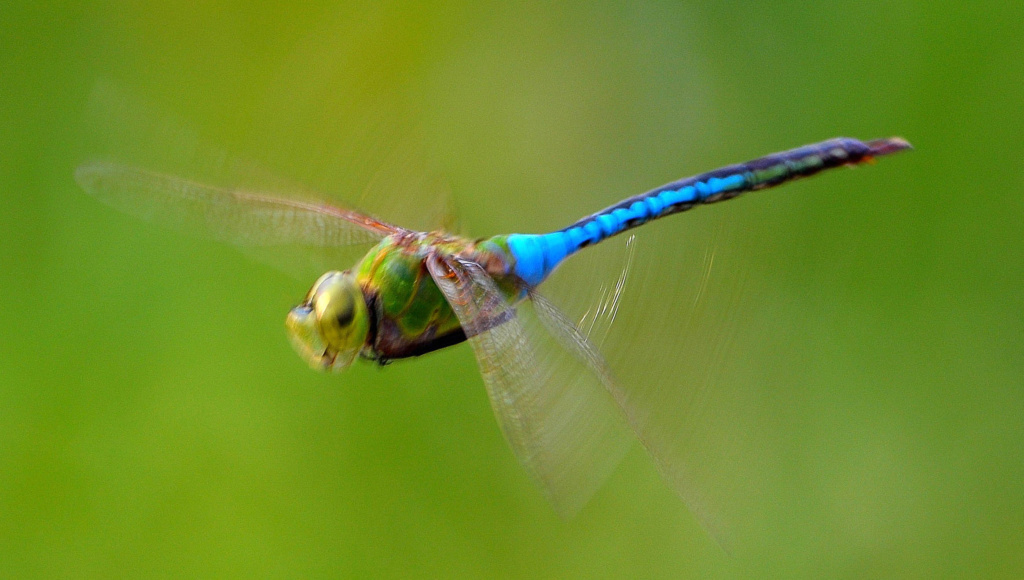
What blew me away wasn’t that I got an okay picture. What blew me away was what the dragonfly was doing. He was returning over and over to the exact same spot in the air. How could he do that so precisely? Even with our most wonderful inventions, humans couldn’t do that. It can’t possibly be a visual thing. They must have some other kind of sense or senses that allow them to return to the exact same spot in the air. We probably have no clue what that sense could be. Just like a person who has always been blind or deaf can’t imagine what sights or sounds are like, we are deaf and blind to the world in ways that dragonflies are not. They can sense something that we can’t even imagine what it is like.
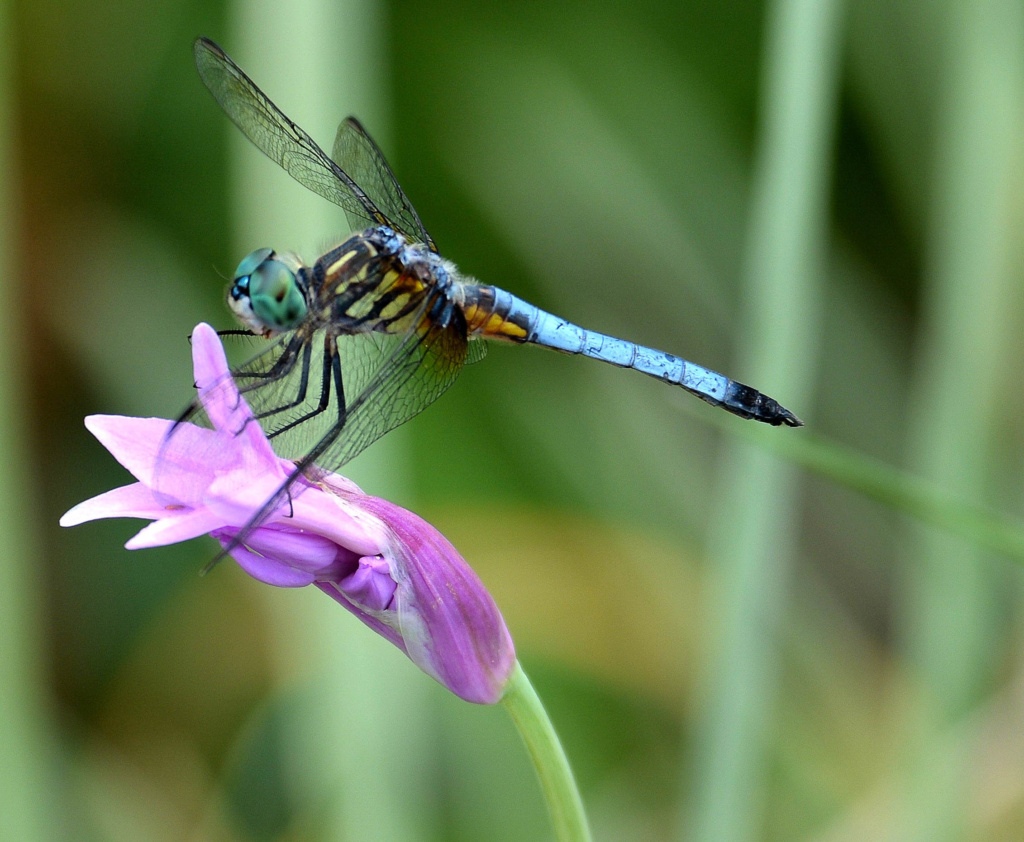
Swarms
There was another unusual dragonfly behavior reported in the fall of 2019 in Pennsylvania, Ohio, and Indiana. Swarms of dragonflies were appearing that were so huge that they showed up on radar. Why this swarming occurs, persists, and goes away are unknown. Any thoughts out there? Your comments are welcome.